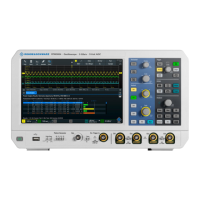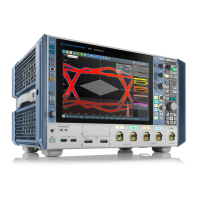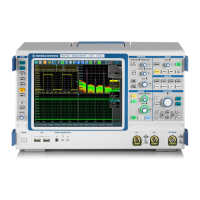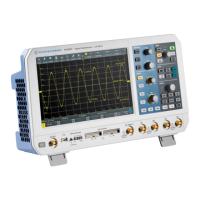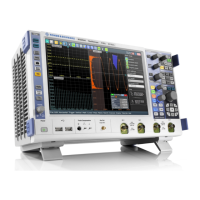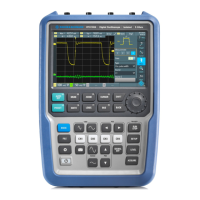Acquisition and Waveform Setup
R&S
®
RTM20xx
20User Manual 1317.4726.02 ─ 01
2.2 Setting up the Waveform
This chapter contains the fundamental procedures for setting up the acquisition and
adjusting the channel waveforms.
Passive probes
Passive probes require compensation for exact signal display and measurement. The
compensation procedure is described in the "Getting Started" manual.
2.2.1 Setting Up the Signal Input with Autoset
Autoset is the solution for the major part of routine test-setup. It is also a good start if you
need to use more complex trigger settings. Autoset finds appropriate horizontal and ver-
tical scales and trigger conditions to present a stable waveform.
1. Connect the probe to the input connector CH N.
The instrument recognizes the probe and turns the channel on.
2. Press the AUTOSET button on the left of the display.
2.2.2 Adjusting the Signal Input Manually
The settings mentioned here are described in detail in:
● chapter 2.3.1, "HORIZONTAL Controls", on page 22
● chapter 2.3.3.2, "Channel Menu", on page 29
● chapter 2.3.3.1, "VERTICAL Controls", on page 27
1. Connect the probe to the input connector CH N.
The instrument recognizes the probe and turns the channel on.
2. Use the SCALE rotary knob in the HORIZONTAL area of the front panel to set up the
time base.
3. Use the POSITION rotary knob to set up the trigger position. Press the knob to reset
the trigger offset to 0 s.
4. Press the channel key corresponding to the input channel. It is lighted with the color
of the channel waveform.
5. In the softkey menu, press the "Coupling" softkey repeatedly to select the correct
coupling.
6. Select the "Bandwidth" limit.
7. If you use a passive probe, adjust the probe settings:
a) Select the "Termination" (input impedance).
b) Select "More" to switch the menu page.
Setting up the Waveform
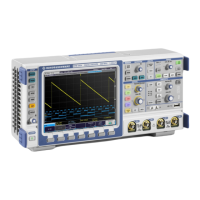
